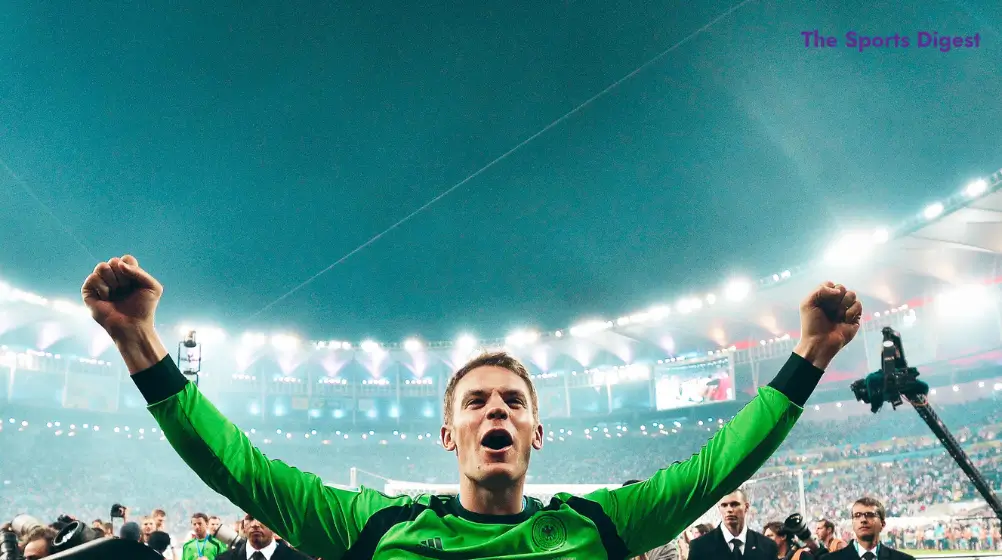Manuel Neuer: Revolutionizing Goalkeeping
In football, fans often speak of the “12th man” – usually referring to passionate supporters giving their team an extra edge. But what if teams aren’t even fully utilizing all eleven players they have on the pitch? This provocative question lies at the heart of a tactical revolution currently unfolding, with Germany’s Manuel Neuer as its most visible pioneer.
Table of Contents
Manuel Neuer: World Cup Controversy Reveals Tactical Innovation
During Germany’s 2014 World Cup campaign, particularly in their matches against Algeria and France, commentators and pundits expressed surprise and concern at their seemingly vulnerable high defensive line. Alan Shearer, among others, questioned the apparent risk-taking, suggesting Germany were leaving themselves open at the back. What these critics missed, however, was that Germany weren’t being reckless – they were redefining how the goalkeeper position could be played.
The goalkeeper as the 11th man, not the odd one out
Traditionally, goalkeepers have been treated as specialized players, separated from their ten outfield teammates both in training and tactical considerations. The position has historically valued physical attributes like height and reach above all else. Yet in a sport where marginal advantages can determine championships, dedicating one player solely to standing between the posts represents a numerical disadvantage that modern tactical thinking can no longer afford to ignore.
Chess teaches us: use every piece
The parallel to chess strategy is illuminating. Effective chess players understand that every piece must contribute maximally, including the King. As the chess adage goes, “The King is a fighting piece – use it.” The same principle applies to football: when a team actively employs their goalkeeper in defending, building attacks, and possession, they effectively gain a numerical advantage over opponents who leave their goalkeeper isolated.
Beyond desperate measures
Curiously, teams have long recognized this advantage, but typically only exploit it in desperate circumstances – when trailing in the final minutes and in need of an equalizer. The goalkeeper ventures forward for a corner kick, temporarily giving the attacking team an extra body. But why restrict this advantage to emergency situations? The conventional wisdom views the sweeper-keeper as a sign of weakness or last resort. This perception likely persists because the tactic has historically been employed only in critical, do-or-die moments.
A tactical innovation, not desperation
Far from being an act of desperation, utilizing the goalkeeper as an additional outfield player represents a tactically intelligent innovation that is poised to become increasingly common in the modern game. Manuel Neuer‘s heat map from Germany’s match against Algeria tells the story: his activity stretched across nearly a third of the pitch, demonstrating that he functions as much more than just a shot-stopper.
“Neuer is not only a world-class goalkeeper, but he is a footballer as well,” observers noted after the match. His willingness and ability to function as a sweeper behind the defense allows his teammates to maintain higher positions, compressing the play and giving Germany control over larger portions of the field.
Recognition from football’s elite
Germany’s coach Joachim Löw recognized this expanded capability, remarking that Manuel Neuer could “play in midfield” if required. Midfielder Toni Kroos went further, calling Manuel Neuer the team’s “11th outfield player” – a stark departure from traditional goalkeeper characterizations.
Much credit for Manuel Neuer evolution belongs to Pep Guardiola, whose influence helped transform him “into a footballer, rather than a goalkeeper.” Under Guardiola’s guidance at Bayern Munich, Manuel Neuer refined his technical skills, vision, and decision-making to complement his already exceptional shot-stopping abilities. The approach is simultaneously dangerous and brilliant, fitting perfectly within Guardiola’s holistic footballing philosophy.
Context matters: team structure and philosophy
It’s worth noting that the sweeper-keeper tactic isn’t universally applicable. It requires a team “geared towards an aim” with complementary positions and roles. Implementing this approach with a goalkeeper in a team like Chelsea (at the time of writing) without the appropriate supporting tactical structure would likely fail. The innovation works because it’s part of a coherent system.
The future of goalkeeping
What we witnessed from Manuel Neuer against Algeria in 2014 and have continued to see since represents nothing less than the future of goalkeeping. Modern keepers will increasingly be expected to fulfill diverse responsibilities beyond merely preventing goals. Manuel Neuer stands as the first truly complete modern sweeper-keeper, but he certainly won’t be the last.
As football continues to evolve, the artificial distinction between the goalkeeper and the “outfield players” will likely diminish. The most successful teams will be those that effectively utilize all eleven players on the pitch – including the one wearing gloves.
Have you ever read an article like this?
There are no reviews yet. Be the first one to write one.






